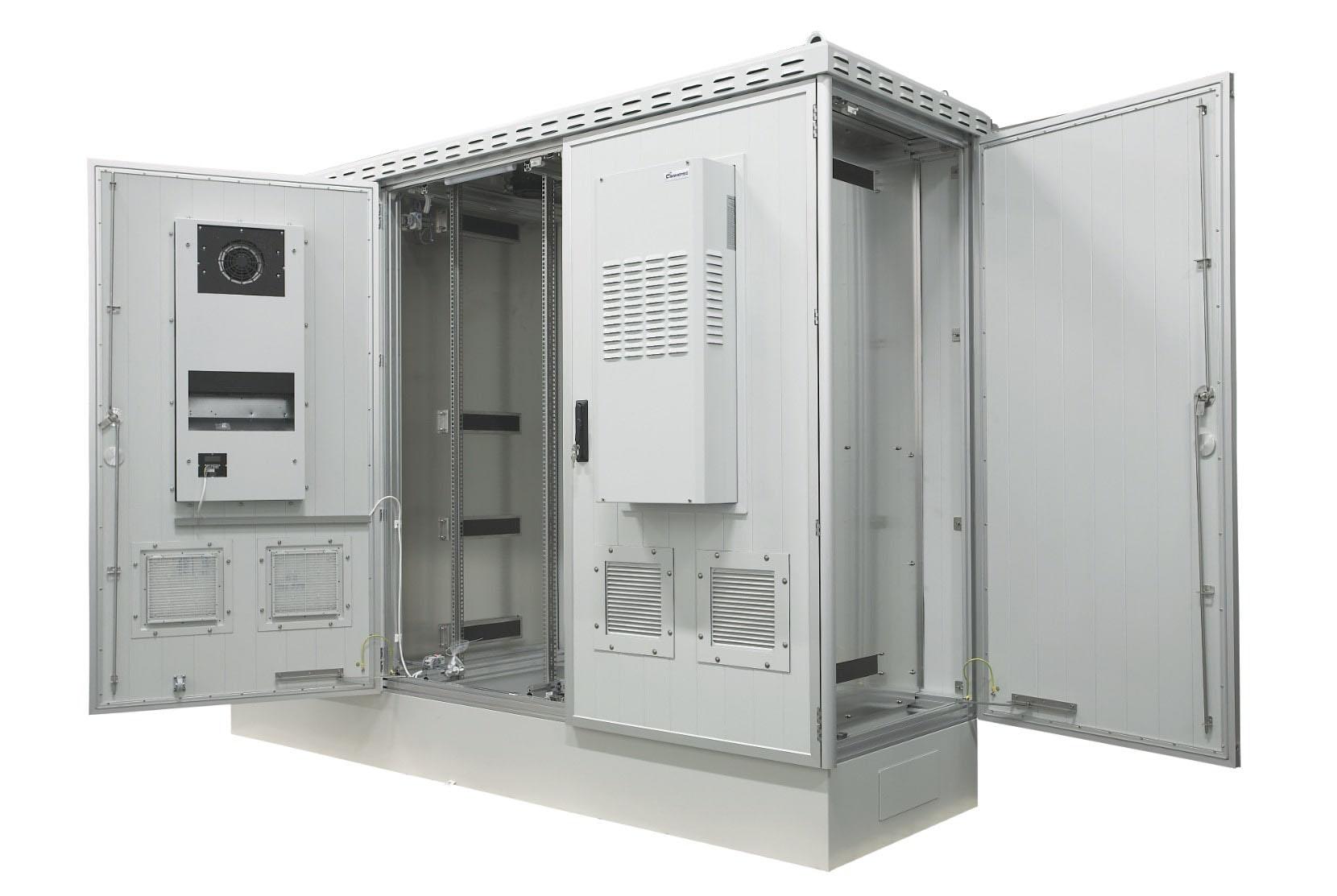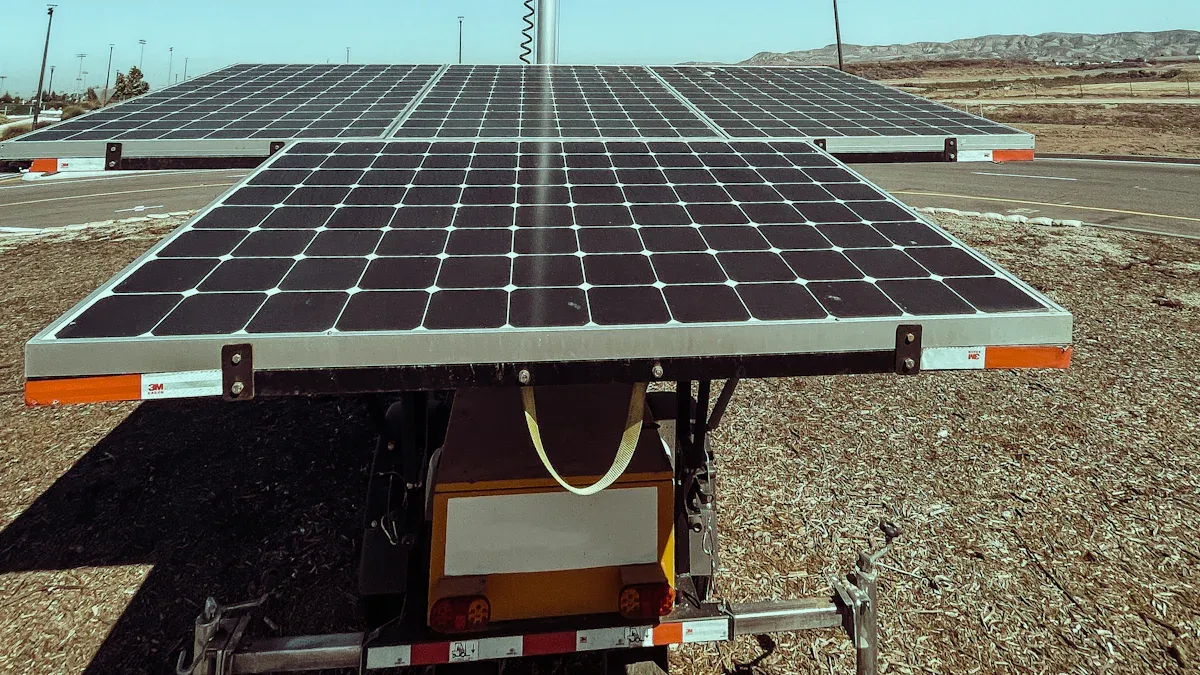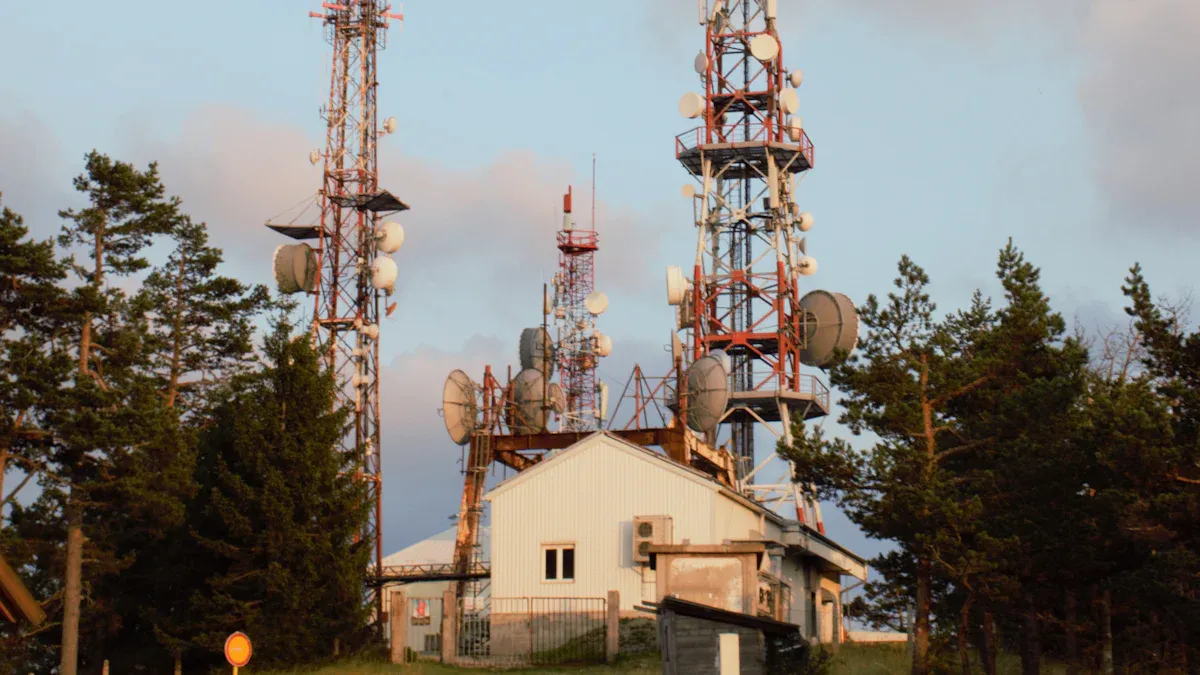Why Solar Telecom Cabinets Are Game-Changing

Solar telecom battery cabinets are changing how we power communication systems. They provide steady and eco-friendly energy options. These cabinets help save money and protect the environment. Solar panels and renewable energy reduce the need for regular electricity. This smart idea cuts costs and lowers pollution. In faraway places without power, solar telecom battery cabinets keep things running. They are very important for today’s telecom networks.
Key Takeaways
Solar telecom cabinets use clean energy, cutting down on pollution.
They have lithium-ion batteries that store power and work well in all weather.
These cabinets help save money by lowering electricity bills and needing less upkeep.
Solar telecom cabinets work well in faraway places, keeping communication running without regular power.
Their design is easy to upgrade, so they can handle new tech like 5G.
What Are Solar-Powered Telecom Battery Cabinets?
What Do Telecom Battery Cabinets Do?
A telecom battery cabinet is a box made to hold batteries. These batteries power telecom tools and keep them running. Even in places without steady electricity, these cabinets provide energy. They are very useful for keeping communication systems working in remote areas. By using solar energy, they cut down on fossil fuel use and offer a greener energy choice.
The main job of a telecom battery cabinet is to keep batteries safe and working well. It shields them from things like heat, moisture, and damage. It also controls energy flow so telecom systems work smoothly without stopping.
Parts of Solar-Powered Battery Cabinets
A solar-powered telecom battery cabinet has many parts that store and share energy. Here’s what’s inside:
Batteries: These store energy from solar panels. Lithium-ion batteries are common because they last long and work well.
Charge Controller: This part manages energy from the solar panels to the batteries. It stops overcharging or draining too much power.
Inverter: It changes stored DC energy into AC power for telecom tools.
Cooling System: This keeps batteries at the right temperature. It uses air conditioners, fans, or heat exchangers.
Protective Enclosure: The cabinet is made of strong materials like magnesium and aluminum. It has coatings to stop rust, heat damage, and vandalism.
These parts work together to make sure the cabinet runs well, even in tough conditions.
Why Lithium-Ion Batteries Are Important
Lithium-ion batteries are key to solar-powered telecom cabinets. They are small, light, and store energy well. Unlike older batteries, they hold more power in less space. This means they last longer without needing frequent recharges.
Lithium-ion batteries also work well in different weather. For example, they can handle temperatures from -45°F to 131°F. They last longer than other batteries, so you don’t need to replace them often. This saves money on repairs and upkeep.
Here’s a simple look at how a telecom battery cabinet handles tough environments:
Feature | Details |
|---|---|
Temperature Range | -45° to +55° |
Humidity | ≤90% (at 30°) |
Air Pressure | 70-106 Pa |
Protection Level | IP65 |
Materials | Magnesium and aluminum alloy |
Design | Heat-insulated sandwich panel |
Cooling System | Air-conditioner, fan, or heat exchanger |
Weather Shield | Anti-rust and graffiti-proof coating |
Security | Strong locks and vandal-proof design |
Maintenance | Easy access with special panels |
These features make sure the cabinet stays strong and works well, no matter the weather.
How Do Solar Telecom Cabinets Work?

Collecting and Changing Solar Energy
Solar telecom cabinets use solar panels to gather sunlight. These panels turn sunlight into direct current (DC) electricity. When sunlight hits the panels, it creates an electric current. This energy goes to a charge controller. The controller stops the batteries from overcharging or getting damaged. This way, clean energy is collected and used well.
Storing Energy in Battery Cabinets
After collecting energy, it needs to be saved for later. Battery cabinets store this energy. Lithium-ion batteries are often used because they work well and last long. These batteries hold a lot of energy in a small space. They can quickly go from 0% to 100% power. This makes sure power is ready when needed.
Here’s a simple look at how energy storage works:
Feature | What It Means |
|---|---|
Discharge Power | The most power it can give at once, in kilowatts (kW) |
Storage Space | The total energy it can hold, in kilowatt-hours (kWh) |
Power Time | How long it can give full power, starting from a full charge |
These features make sure stored energy is dependable and works well, even in tough conditions.
Sending Power to Telecom Tools
Stored energy needs to be sent to telecom tools. The inverter changes DC energy into AC power. Most telecom tools use AC power. This system gives steady power, even during busy times. It’s very helpful in places without regular electricity. With lithium-ion batteries and smart systems, solar telecom cabinets stay efficient and reliable.
Key Benefits of Solar Telecom Cabinets
Saving Money and Lowering Costs
Solar telecom cabinets help cut costs in many ways. Using solar energy means less need for regular electricity. This lowers power bills and fuel expenses. Over time, these savings grow, making solar systems a smart choice.
Maintenance costs are also lower. These cabinets are built to last and need fewer repairs. Lithium-ion batteries last longer and need less care than older ones. This saves money on replacements and fixing services.
Another way to save is by avoiding downtime. Solar cabinets give steady power, even in places with bad electricity. This keeps telecom tools working and prevents costly stops.
Tip: Solar telecom cabinets may cost more upfront, but they save money over time.
Helping the Environment and Cutting Pollution
Switching to solar telecom cabinets is good for the planet. They use renewable energy, which means less fossil fuel use. Clean energy lowers harmful gas emissions and helps the Earth stay healthy.
Battery cabinets store solar energy well, wasting very little. Lithium-ion batteries are better for the environment because they last longer and recycle easily.
Solar systems are quiet and clean, unlike noisy diesel generators. They don’t make harmful fumes, making them great for cities and rural areas.
Did you know? One solar-powered telecom site can cut 10 tons of carbon emissions yearly.
Reliable Power in Hard-to-Reach Places
Solar telecom cabinets work well in remote areas. They give power where regular electricity isn’t available. This makes them perfect for rural zones, mountains, and disaster areas.
These systems are reliable because of their smart design. Battery cabinets store enough energy for cloudy days or nighttime. Lithium-ion batteries work well in extreme weather, keeping telecom tools running.
Solar cabinets also use energy wisely. Parts like charge controllers and inverters make sure no energy is wasted. This mix of reliability and efficiency makes them a big deal for telecom companies.
Note: Solar telecom cabinets are safe and trusted by telecom providers everywhere.
Scalability and Flexibility for Telecom Networks
Solar telecom cabinets are highly flexible and easy to expand. Their modular designs let you upgrade systems without big changes. This means your network can grow with new tech like 5G and IoT.
Many cabinets have adjustable shelves and rails. These parts fit different setups and new tools. For example, as power needs grow, these cabinets adjust to handle more energy. You can expand your network without replacing everything.
Did you know? Modular cabinets let you add parts without rebuilding the whole system. This saves time, money, and helps manage more data traffic.
Another benefit is their use of renewable energy like solar panels and wind power. Using these sources lowers costs and helps the environment. For telecom companies, this is key to staying green and reliable.
Solar cabinets also work well in remote areas. They use renewable energy to give steady power in tough places. This makes them great for growing networks in hard-to-reach areas or handling changing energy needs.
Real-World Applications of Solar Telecom Cabinets

Helping Areas Without Reliable Electricity
Solar telecom cabinets are very useful where power is hard to get. Many developing regions don’t have steady electricity. These cabinets keep telecom towers running and ensure communication works. They use solar energy and smart storage systems to give reliable power. This helps connect people to the internet and mobile networks in places that need it most.
In off-grid areas, these cabinets replace costly diesel generators. They save money on fuel and need less fixing. They also work quietly, which is great for rural or nature-friendly zones. Stored energy keeps telecom tools working during cloudy days or at night.
Supporting Disaster Recovery and Emergency Communication
During disasters, staying connected is very important. Solar telecom cabinets keep networks running when regular power stops. They store enough energy to power emergency tools for a long time. This makes them dependable during big outages.
In areas prone to disasters, these cabinets are tough and reliable. They handle bad weather and work when other power sources fail. Rescue teams and aid groups use them to share updates and organize help for affected people.
Used by Top Telecom Companies
Big telecom companies now use solar telecom cabinets to improve their networks. By adding renewable energy and storage systems, they cut costs and go green. These cabinets are used in cities and remote areas for 4G and new 5G setups.
Telecom companies like how easy these cabinets are to expand. As networks grow, they can add more energy without big changes. Their modular design makes upgrades simple and fast. This helps companies prepare for future needs without major problems.
Fun Fact: Switching to solar systems has helped some telecom companies cut energy costs by 30%.
Challenges and Considerations
Upfront Costs and Long-Term Savings
Switching to solar telecom cabinets costs more at first. You need to buy solar panels, batteries, and other parts. These costs are higher than older systems like lead-acid batteries. But over time, you save money on electricity and fuel. Solar cabinets lower bills and cut out diesel fuel costs. These savings can make up for the initial expense.
To figure out your savings, think about energy costs, repairs, and battery life. Lithium-ion batteries last longer than lead-acid ones, so you replace them less often. With good planning, your solar system can pay for itself in a few years.
Tip: Check for tax breaks or government programs for renewable energy. These can help lower your starting costs.
Weather Challenges and Backup Solutions
Solar telecom cabinets need sunlight to make power. Cloudy weather or long winters can reduce energy. This might seem like a problem, but it’s manageable. Strong batteries store extra energy for cloudy days or nights. Lithium-ion batteries are great for backup power and work well in tough weather.
You can also add wind turbines to your system. Using both solar and wind power ensures steady energy. Regular checks and maintenance keep your system running smoothly.
Note: Smart energy systems can help use power better, even in bad weather.
Maintenance and Skilled Support
Solar telecom cabinets are built to last but still need care. You should check batteries, cooling systems, and enclosures often. Lithium-ion batteries need less upkeep than older types but still require safety checks.
It’s important to have skilled workers for repairs or upgrades. Remote monitoring tools can help spot problems early. This makes fixing issues faster and easier.
Reminder: Always follow safety rules during maintenance. Use the right tools and follow the manufacturer’s instructions.
Solar-powered telecom battery cabinets are a smart fix for today’s telecom problems. They use renewable energy and store it efficiently. These cabinets don’t need regular power grids, so they’re great for remote areas. Their advanced storage systems give steady power, even in tough conditions.
As technology improves, these cabinets will change telecom systems even more. They help you use eco-friendly energy while meeting higher power needs. By choosing these systems, you support a cleaner planet and stronger communication networks.
FAQ
What kinds of battery cabinets are used in solar telecom systems?
There are two main types: ventilated and sealed cabinets. Ventilated cabinets let air flow to cool batteries. Sealed cabinets keep out dust and moisture. Both help batteries work well.
How long do lithium-ion battery cabinets last?
Lithium-ion battery cabinets usually last 10 to 15 years. Their long life makes them a smart and affordable choice for telecom systems.
Why are solar energy storage cabinets important?
Solar energy storage cabinets save sunlight energy for later use. They give power during cloudy days or at night. This makes them key for off-grid telecom systems.
Can modular battery cabinets grow with energy needs?
Yes, modular cabinets can expand as energy needs increase. You can add more units easily, making them great for growing telecom networks.
How do energy storage cabinets handle bad weather?
Energy storage cabinets are made to work in tough weather. Lithium-ion batteries and cooling systems keep them running in extreme temperatures.
See Also
New Developments Shaping Outdoor Telecom Cabinet Design
The Importance of Outdoor Communication Cabinets in Telecom
Exploring Outdoor Communication Cabinets and Their Telecom Function
CALL US DIRECTLY
86-13752765943
3A-8, SHUIWAN 1979 SQUARE (PHASE II), NO.111, TAIZI ROAD,SHUIWAN COMMUNITY, ZHAOSHANG STREET, NANSHAN DISTRICT, SHENZHEN, GUANGDONG, CHINA

